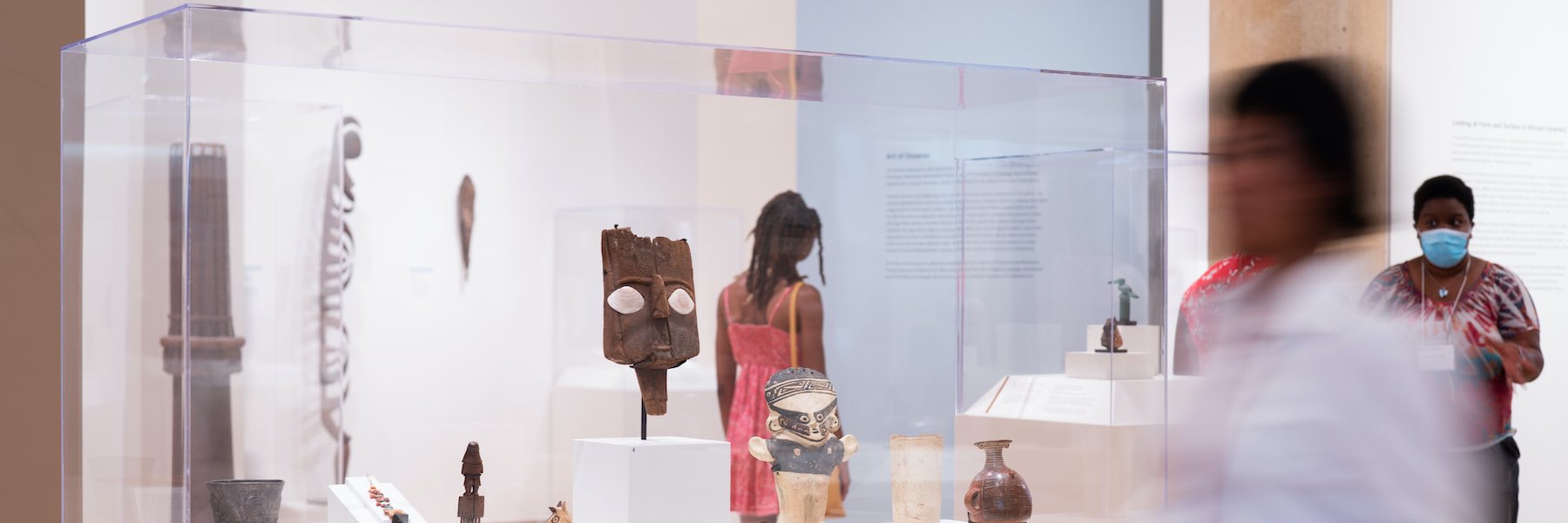Asian Art
The museum’s Asian and Islamic art collection spans 4,000 years. Asia is the longtime home of most of the human population. Guided by shared characteristics, the collection is organized into five major groups determined by geographic region and historical or cultural affinities, although each country has its distinct cultural heritage.
East Asia includes the modern countries of Japan, China, and Korea. Historically, Korea and Japan absorbed many of the religious and cultural characteristics of China, such as the practice of Mahayana Buddhism.
Southeast Asia, represented by countries such as Thailand and Cambodia, shares the Hindu and Theravada Buddhist religious traditions. Central Eurasia includes the ancient Kushan kingdom of Gandhara and the animal art of the bronze-age steppes, as well as the art of contemporary nations such as Tibet, Mongolia, Nepal, and Bhutan. These countries share the religious practice of Esoteric or Tantric Buddhism. South Asia is mostly, but not exclusively, represented by the arts of India and its many religious traditions, such as Hinduism, Buddhism, Jain, and Islam.
The Islamic collection is defined by religious practice rather than by geographic area and includes the art of Mogul India as well as the Middle East.


